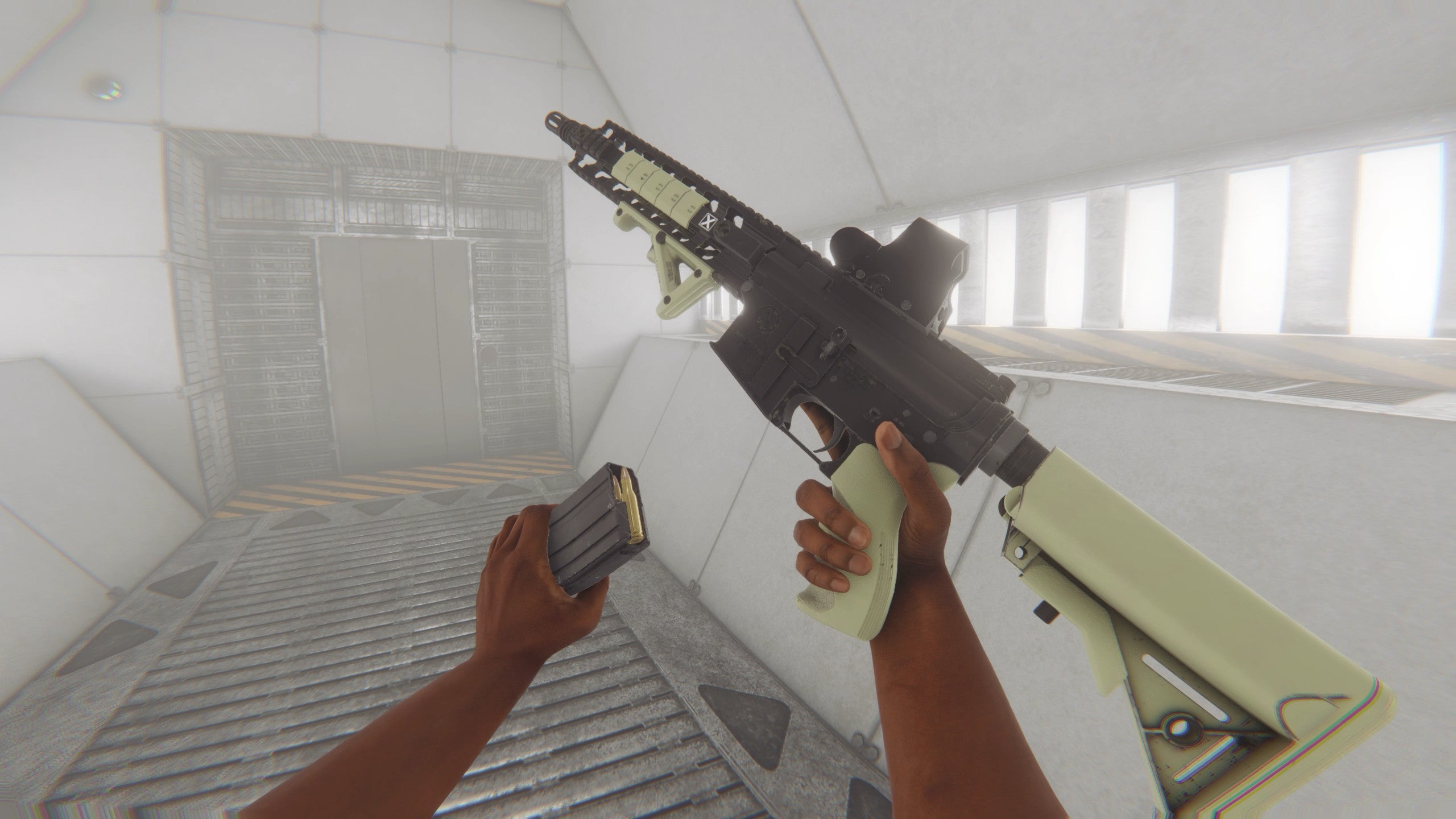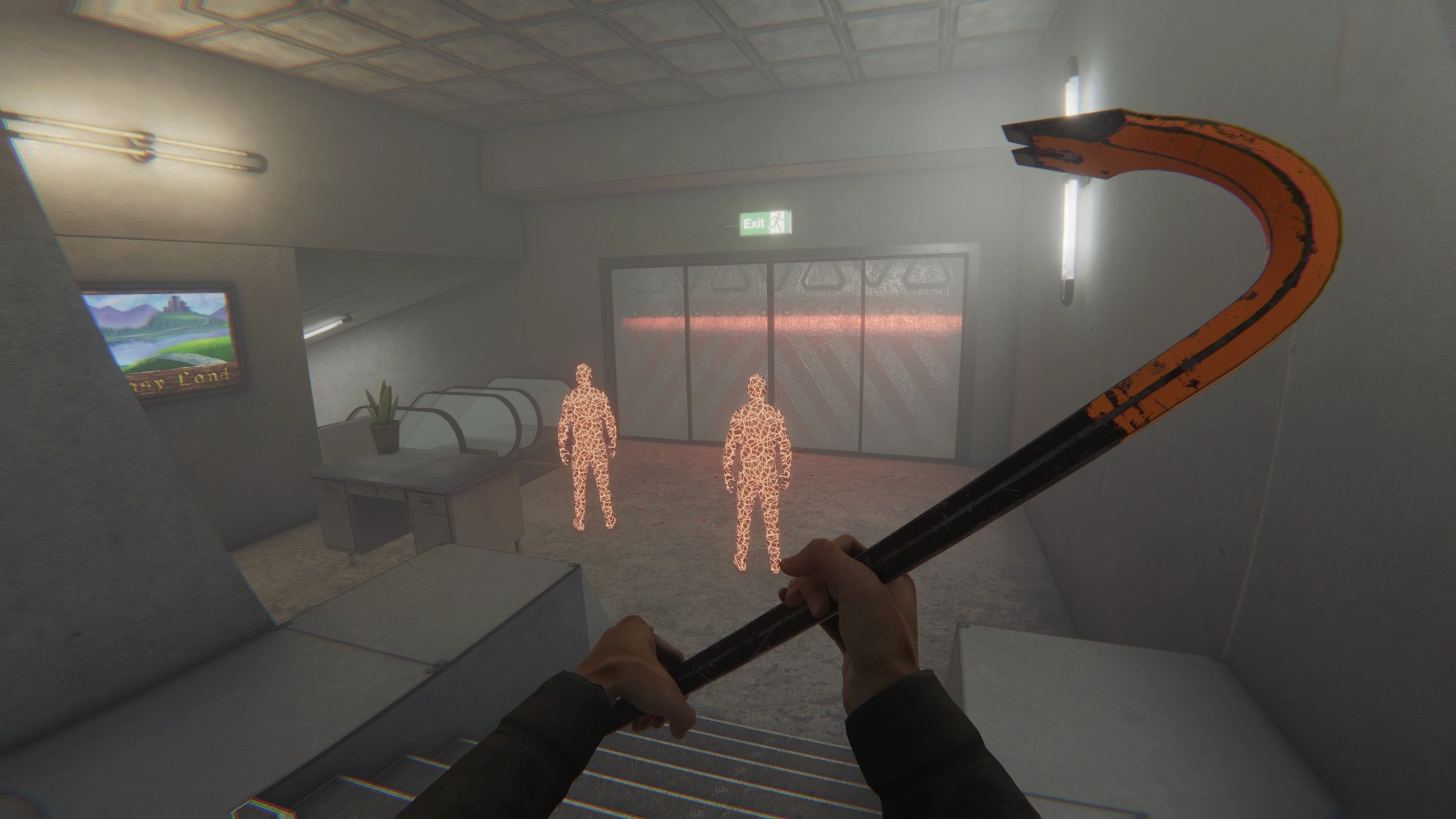Then Half-Life: Alyx came around, raising the (crow)bar so high that you’d need to be Mr Fantastic or some sort of bird with hands to reach it. Which is partly why Bonelab, the newly released sequel to Boneworks, hasn’t quite gelled with me in the way its older sibling did. Technologically, its still very impressive, and noodling around with its massive interactive potential remains undeniably fun. But it often feels like a lot of good ideas with too little connective tissue between them. It’s also even less compromising on your physiology than Boneworks was, seemingly determined to make existing in VR as uncomfortable as possible. Bonelab continues with the same premise as Boneworks, with you exploring a half-finished fictional MetaVerse known as MythOS, where environments shift from fully realised fantasy dungeons to crudely blocked-out drainage systems, while enemies include robotic headcrabs and wire-mesh humanoids that bleed peach-juice when shot. It’s a structure that reflects Bonelab’s own status as a blend of game and toolkit, essentially a VR Garry’s Mod intended to facilitate your creativity as much as provide curated adventures. Also like Garry’s Mod, Bonelab is profoundly weird. The game starts off with your character manifesting into existence, shifting from wire-mesh skeleton to actual skeleton to fully fleshed out character model before your eyes. Then it spawns a gallows in front of you, and elbow-nudges you to put the noose around your neck. Upon doing this, a blighted medieval landscape appears around you, and a torch-wielding peasant mob proceed to hang you above an inky black pit. While the game provides a last-minute reprieve, it relies on you to take it, meaning it is possible to die before the game has properly started. It’s an incredibly disorienting introduction, which depending on your perspective is either bold or counterproductive. Either way, it sets the tone for Bonelab’s forward progression. After a tutorial section that reintroduces you to the game’s basic mechanics, moving, jumping, the excellent VR firearms, and the less excellent melee weapons, Bonelab guides you to a hub area where you can choose from a range of different experiences. You can familiarise yourself with the game’s weapons in a tactical firing range, take on waves of enemies in the arena, experiment with weirder scenarios like giant ten-pin-bowling, or just goof around in an array of Garry’s Mod-style sandboxes. At first glance, this hub area appears to represent the sum total of Bonelab’s experience. But beyond this is an entire campaign which Stress Level Zero chooses to hide behind an elaborate crane puzzle. The intent is to encourage you to familiarise yourself with the core systems before proceeding with the campaign, but you could quite easily miss it entirely – and people have done. The campaign itself is akin to taking an edible and then playing a bunch of Half-Life 2 mods, with you travelling through an array of half-finished videogames within MythOS. Into this experiential soup, Bonelab adds the disconcerting gimmick of body-switching. At various points in the campaign, you can change your physical form. In a sequence where you beat-down cops in a Hotline Miami-inspired bar, your avatar is transformed to a barrel-chested, musclebound thug. Other avatars include a speedy female ninja and a petite kawaii anime girl. Now, having a physically rendered body in VR is weird enough, because your real-life limbs never quite match your avatar’s digital equivalents, and so it feels like your skin is either too tight or too loose. Being dropped into a sequence of bodies that are so far removed from your own is downright uncomfortable. It’s not necessarily a bad thing – Bonelab has made my think about the relationship between my body and my identity in a way no game has before – but it’s not exactly a pleasant experience you’d casually recommend to someone either. This sensation might be less off-putting if Bonelab wasn’t so physiologically demanding in general. As with the first game, Stress Level Zero seem highly resistant to implementing VR comfort features like teleported movement or other anti-motion sickness settings. Indeed, it often pushes in the other direction, encouraging you to partaking in parkour courses with fully simulated jumping, and driving vehicles like go-karts around twisting tracks. It also leans heavily into surreal effects. Stepping through the various doors in the Hub triggers a kaleidoscopic effect that almost had me emitting a more fluid kaleidoscope from my mouth. You don’t simply need VR legs to play Bonelab, you need the VR legs of a mountain goat. Assuming you can handle the various ways Bonelab messes with your head, though, there is a lot to appreciate here. The physicality of Stress Level Zero’s Marrow engine is unparalleled; there is no better VR game for touching and handling stuff. It also has the best guns of any VR game, particularly when it comes to two handed firearms like rifles and shotguns. These are extremely difficult to represent in VR, because in reality you’re holding two fistfuls of air with nothing connecting them. But there’s something about the simulated weight and presence of Bonelab’s two handed guns that makes it easy to keep track of where your hands are supposed to be. The melee weapons aren’t as good as those seen in The Walking Dead: Saints and Sinners, but on the other hand, hitting enemies with a sledgehammer in Bonelab is a lot less traumatic. Would I recommend playing Bonelab? Only if you’ve already played and enjoyed Boneworks, because it’s a more extreme version of that game. But it is an interesting metric for how VR has evolved in the last few years. I respect its commitment to being weird and challenging, but at the same time, it made me realise how smart so much of the design in Half-Life: Alyx is, the importance of little things like not constantly having to hold down the grip button to stop yourself dropping your virtual gun. If you’re already well-versed in VR, you’ll find plenty to like in Bonelab. Otherwise, you’re better off trying something a little less spicy.

